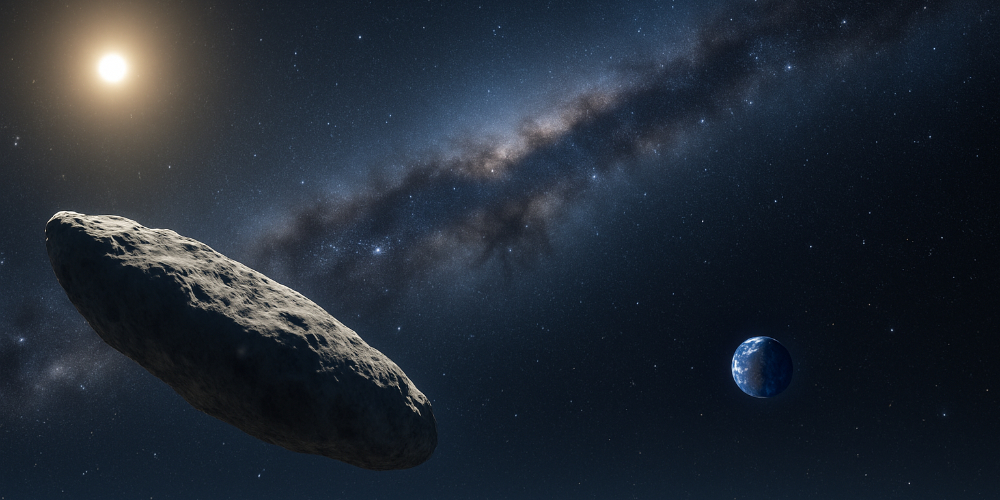| 3I/Atlas: An Interstellar Visitor from Far Beyond (2025-7-04) ⬅︎ |
 |
If you’ve ever looked up at the stars and wondered if there might be alien visitors, you’re in for a surprise. One of the newest and most exciting discoveries is a mysterious visitor called 3I/Atlas. What makes it special? It’s not from around here…. it’s an alien. Literally.
3I/Atlas is a small object, no bigger than 15 miles in diameter. It's zooming through our solar system but it wasn’t born here. It came from another star system, traveling through the vast emptiness of space for millions or even billions of years before entering ours.
It’s most likely a rocky or icy object, maybe something like a comet, but unlike regular comets, it doesn’t show a bright glowing tail—at least not yet. That’s because it may not be made of the same materials or it might not be close enough to the Sun to warm up and release gas.
The “I” in 3I/Atlas stands for “interstellar.” The “3” in its name means it’s the third known interstellar object ever discovered. It was discovered in 2024 by the Asteroid Terrestrial-impact Last Alert System, or ATLAS, a powerful system of robotic telescopes designed to scan the skies for asteroids that might come near Earth.
While looking through their data, astronomers noticed an object moving in a very unusual way—too fast and on a strange path that didn’t match anything native to our solar system.
When scientists calculated its orbit, they realized it wasn’t just strange—it was hyperbolic, meaning it’s on a one-way journey and not bound to the Sun like our planets and comets are. That’s the first clue it came from outside our solar system.
Also, 3I/Atlas is moving at 140,000 mph -- too fast to be in orbit around our Sun -- so it clearly didn’t start here.
3I/Atlas gives us a rare chance to study something from another star system. We can’t go to distant stars (yet), but this object is coming to us! Studying its motion, brightness, and even its color can tell scientists about the kinds of materials and conditions in other parts of the galaxy. Each interstellar object is like a message in a bottle from another world, and 3I/Atlas is our next cosmic postcard.
Unfortunately, 3I/Atlas is too faint to be seen with the naked eye, and even most backyard telescopes won’t pick it up. But astronomers are tracking it with professional observatories around the world.
This discovery is a perfect reminder that the universe is full of surprises. We don’t have to leave Earth to find signs of alien worlds. Occasionally, they come to us! |
| |



